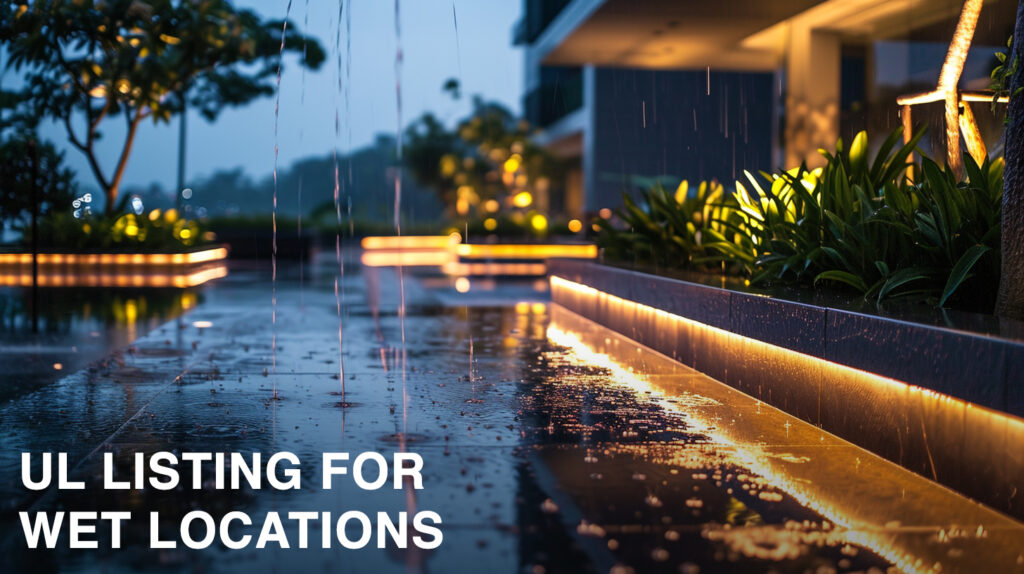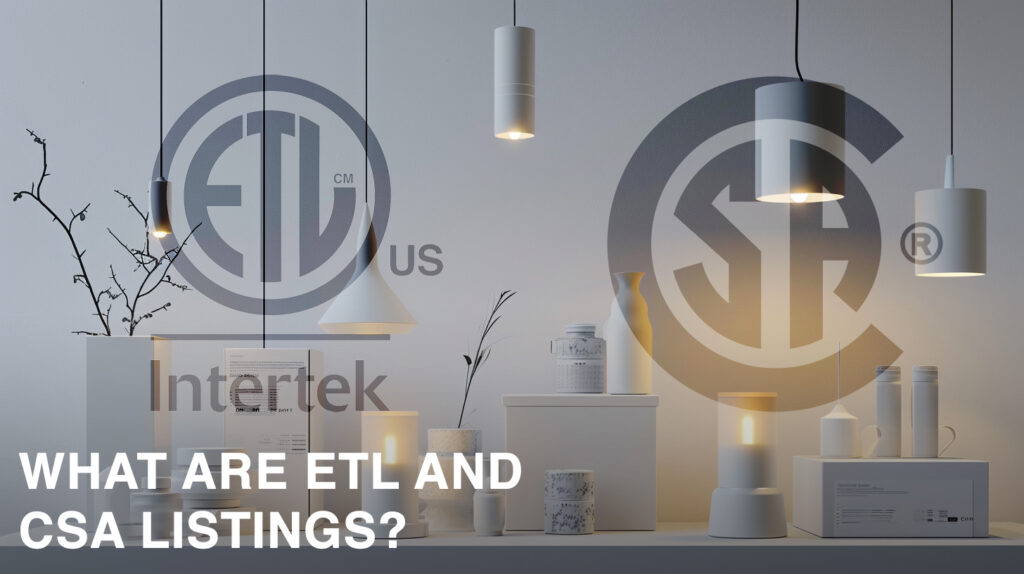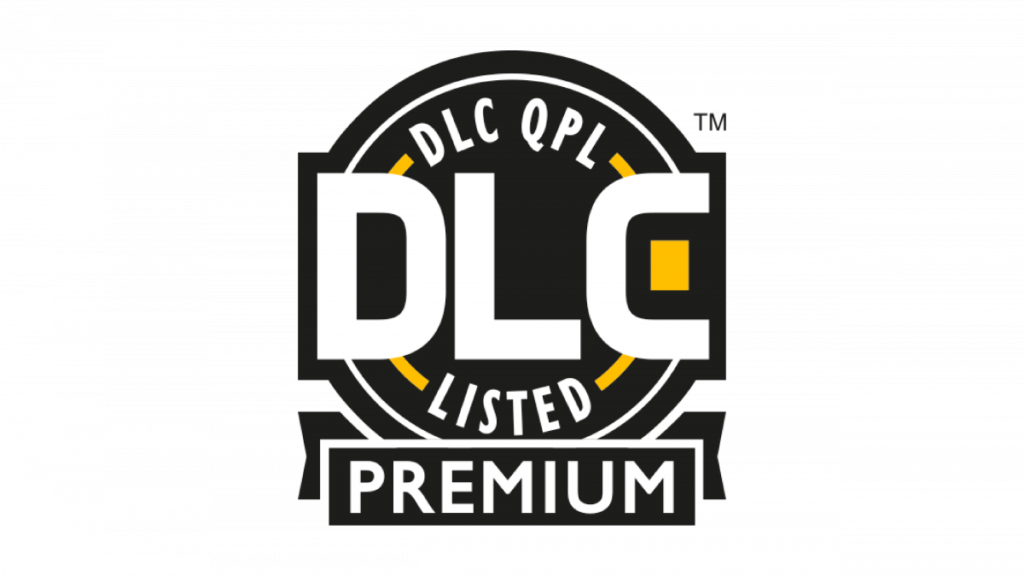Understanding UL Listing For Light Fixtures: A Guide To UL Listings January 4, 2024 – Posted in: Lighting Information

Table of Contents
Choosing the right light fixture can sometimes feel like navigating a maze of technical terms and safety standards. UL listing is one such term that pops up often, standing out as a benchmark for reliability in lighting products.
This post will shine a light on what UL listing means for your fixtures, guiding you through its importance and how to select suitable certifications for your needs.
Key Points
- UL listing is a safety mark for light fixtures checked by Underwriters Laboratories.
- Different UL listings are for dry, damp, or wet places. Pick the one that matches where you’ll use your light.
- ETL and CSA also test lights for safety, like UL does.
- Building codes often need lights to be UL or ETL listed. This is critical for lighting safety.
- DLC and Energy Star certifications mean lights save energy and money.

What is UL Listing for Light Fixtures?
UL listing for light fixtures is a certification indicating that the product has met rigorous safety standards set by Underwriters Laboratories, a globally recognized organization specializing in product safety testing and certification.
This crucial seal of approval ensures that lighting products are constructed with adherence to specific electrical safety requirements, providing peace of mind to consumers regarding their use.
Definition of UL listing
UL listing is a seal of safety you might have seen on many electrical products. It means Underwriters Laboratories, a trusted group that checks if products are safe to use, has tested samples of the product.
If a light fixture has this mark, it passed UL’s various safety tests and meets their standards. This helps people know they’re buying something that won’t be dangerous when used correctly.
When you see the UL symbol on your lamp or light bulb, it tells you that experts have looked at how it was made and checked if all the parts like wires and switches follow strict safety rules.
Having lights with a UL certification can make sure your home stays safe because every piece has been given the okay by these careful testers who put safety first.
Role of UL in product certification

UL plays a big part in making sure that light fixtures are safe. They test lights and other products to find any risks. When UL gives something a certification, it means they have checked that the item meets specific safety standards.
This helps companies in the lighting industry show their products are reliable and trustworthy.
The people at UL Solutions look very closely at lamps, lighting fixtures, signs, and more. They check each product with care to make it safe for everyone to use. Their label tells you the product has passed important tests for safety and quality.

Understanding the Different Types of Listings
Delving into the various UL listings for light fixtures ensures that you’re equipped with knowledge to select the proper lighting for different environments. Each classification denotes a level of safety in specific conditions, from dry indoor spaces to outdoor areas exposed to moisture.
UL Listed for Dry Locations (Dry Rated)

UL listing for dry locations means the light fixture can be safely used inside where there is no water. Think about places like your living room, bedroom, or office. These spots usually stay dry and do not have a bunch of moisture in the air.
So when you see a light that says it’s UL listed for dry locations, you’ll know it’s good to use in these areas of your home or work space.
This kind of UL rating helps make sure lights are safe and right for certain spots. It checks if they can handle being around things like dust without any trouble but reminds us not to put them somewhere wet or very humid.
UL Listed for Damp Locations (Damp Rated)

UL Listed for Damp Locations means light fixtures are safe to use in places where they might get a bit wet but not soaked. For example, these lights work well in bathrooms or covered porches where there’s moisture in the air but no direct rain.
Each damp rated fixture has a special mark that shows it passed tests for these environments.
It’s key to pick a light with this damp rating if you plan to put it somewhere that gets humid. That way, you know your lighting is built to handle the extra moisture without any safety issues.
Always look for labels saying “Suitable for Damp Locations” on lighting if your spot is kind of steamy like over a shower or by an indoor pool.
UL Listed for Wet Locations (Wet Rated)

Lights that are UL Listed for Wet Locations can handle rain, snow, and ice. You can use these lights outside where water might splash or flow on them. Think of places like your garden paths, the lanterns by your door, or lights around a pool.
They’re made to be tough against weather.
This “Wet Rated” tag means a light is safe for places that get very wet. It’s perfect for outdoor spots like decks without roofs or shower stalls in gyms and pools. Use these lights without worry—they’ve been tested to work well and stay safe even when water hits them directly.
What are ETL and CSA Listings?

ETL and CSA listings serve as alternative certifications to UL for light fixtures, indicating that products have met rigorous standards for safety and performance. While ETL is associated with Intertek’s testing services, CSA represents the Canadian Standards Association benchmarks, both of which provide assurance akin to the familiar UL mark consumers trust.
Definition of ETL and CSA listings
ETL and CSA are both organizations that offer safety certifications for products, like light fixtures. ETL stands for Electrical Testing Laboratories from Intertek, part of the NRTL program that checks if electrical products meet North American safety standards. The NRTL (Nationally Recognized Testing Laboratory) program is developed by the Occupational Safety and Health Administration or OSHA.
When a product has an ETL listed mark, it means it’s safe to use based on those standards.
CSA stands for Canadian Standards Association. They do similar work to ETL but focus on Canadian standards. Products with CSA listings have been tested and found to be safe according to Canadian regulations.
Both ETL and CSA ensure that lights and other products won’t cause harm when people use them properly.
Comparison to UL listings
In the world of light fixture certifications, understanding the differences between ETL and UL listings is crucial for safety and compliance with building codes. Below is a table summarizing how these certifications compare:
| Aspect | UL Listing | ETL Listing |
|---|---|---|
| Definition | Verification that product samples meet safety requirements. | Proof that product meets safety standards based on UL’s standard. |
| Standards Development | UL develops its own standards for certification. | ETL uses existing standards, like those developed by UL, for certification. |
| Safety Testing | Products are tested to UL’s rigorous safety standards. | Testing meets the necessary criteria for safety, equivalent to UL’s. |
| Market Recognition | Widely recognized as a safety certification mark in the U.S. | Also recognized, but sometimes less familiar to consumers than UL. |
| Code Compliance | Accepted by code authorities across the U.S. | Generally accepted by code authorities, similar to UL listings. |
| Types of Listings | Includes Dry Rated, Damp Rated, and Wet Rated. | Often mirrors UL’s listing types for consistency. |
| Consumer Trust | High level of trust due to long history and reputation. | Gaining trust as a valid alternative to UL. |
Choosing between UL and ETL listings will depend on various factors such as product type, intended use, and the requirements of local building codes. Both marks assure consumers that products have passed safety tests and comply with current standards. Selecting the appropriate listing ensures that light fixtures are safe for their intended application, providing peace of mind for consumers and manufacturers alike.
When is UL or ETL Listing Required?

Understanding when your light fixture needs UL or ETL certification is crucial for both compliance and safety. These listings are often mandated by building codes and regulations to ensure that the products installed in homes and commercial spaces meet rigorous electrical safety standards.
Code requirements for UL or ETL listing
UL or ETL listing shows that a product meets certain safety standards. These marks are important for passing inspections and keeping people safe.
- The National Electric Code (NEC Section 411) says low voltage lighting must have a NRTL listing.
- Light fixtures need to meet UL’s own standards or ones approved by third parties.
- LED strip lights and other low voltage products should follow UL rules.
- Building codes often ask for either UL or ETL listed items to ensure safety.
- Without these listings, you may not be able to use the products in some buildings.
- Some insurance policies might require lighting to be UL or ETL listed before covering damages.
- Public places like schools and hospitals are strict about using properly listed lighting for extra safety.
- Both UL and ETL marks mean experts have tested the item for electrical risks.
- Following these codes helps you stay legal and keeps your lights working right.
Importance of listing for safety and compliance

Getting lights with UL or ETL listing means they meet high safety standards. Testing labs check the lights to make sure they’re safe. This keeps you and your home safe from fire or electric shock.
When shops sell lighting, they often need to show that their products have been tested.
Safety rules in places like offices and schools say you must use listed lighting. This is because these lights have been checked for risks and passed tough tests. Companies that follow these rules care about keeping everyone safe.
Plus, using listed lights can help avoid legal troubles if something goes wrong.
Choosing the Right UL Listing for Your Needs

Selecting the appropriate UL listing for your lighting fixtures is vital, as it hinges on specific environmental conditions and intended use. Understanding these listings helps ensure that you pick light fittings that not only meet safety regulations but are also suitably equipped for their location, be it a dry office space or an exposed outdoor area.
Factors to consider
Choosing the right UL listing for your lights is important. Think about these things before you make a choice:
- Where the light will go: Dry, damp, or wet places need different types of lights. Pick a light that matches where you want to use it.
- Safety and standards: Look for UL, ETL, or CSA marks. These show the light meets high safety and quality levels.
- The purpose of the light: If it’s for work or home, make sure it fits what you need.
- Type of light: LED lighting might be good if you want to save energy. Think about what kind of bulb you want.
- Certifications needed: Some places require lights to have Energy Star or DLC listings for extra benefits like saving power or money.
- Durability needs: Lights with good IP ratings last longer in tough spots.
- Your budget: More features usually mean higher cost. Find a balance between what you can pay and the quality you need.
- Design and style preferences: You might want lights that look a certain way. Make sure they also have the right UL listing.
UL listed vs. UL rated
When selecting lighting fixtures for different environments, understanding the distinction between UL listed and UL rated is crucial for safety and compliance. Here’s a comprehensive comparison in an HTML table:
| UL Listed | UL Rated |
|---|---|
| Indicates that the product has been tested by UL and meets specific safety standards. | Refers to products that meet generic UL safety standards but haven’t been tested by UL itself. |
| Products undergo rigorous testing and ongoing factory inspections. | Manufacturers assert compliance with UL standards without independent testing. |
| Carries the official UL logo on the product label. | May not feature the UL mark; often uses terminology like “UL rated” or “meets UL standards.” |
| Widely accepted by code authorities across the United States and Canada. | May not be recognized or accepted by certain code authorities or inspectors. |
| Often required for installations in commercial or public spaces. | More commonly found in products for residential or less-regulated environments. |
| Ensures a high level of trust and safety for consumers and industries. | Products can be safe but carry a lesser degree of verification compared to UL listed items. |
Lighting professionals must consider these distinctions to ensure they adhere to the highest safety standards and comply with local regulations. UL listed products provide a greater assurance of safety, having been independently verified through extensive testing.
Other Certifications to Consider

Beyond the realm of UL listings, there are other certifications like DLC and Energy Star that factor into selecting lighting solutions—let’s delve into the value they add to your lighting choices.
DLC listing

You can trust lights with a DLC listing to be top quality and reliable. They go through tough tests before they get this label. If you see DLC, it means the light is super efficient too.
The people at DLC make sure only good grade lighting gets their stamp of approval.
DLC Premium takes things up a notch by marking the best lights and upgrade kits out there. These products shine brighter, work better, and save more energy than others. If you pick DLC Premium, you’re choosing some of the best lighting gear around!
Energy Star certification

Energy Star certification means a light meets strict energy efficiency guidelines. The U.S. Environmental Protection Agency sets these rules to make sure lights save you money and protect the environment.
If a light has this certification, it uses less power and costs less to run, which is good for your wallet and the Earth. Lights with Energy Star are tested by labs that check if they really are saving energy as promised.
So, buying lights with this mark helps you feel sure they’re both safe and kind to nature.
UL also checks if products like lights use energy well and follow laws about being efficient. They do tests and give certifications that show a product is ready for people to safely use it at home or work.
Frequently Asked Questions – UL Listings For Lights
What does UL listed mean for light fixtures?
UL listed means a light fixture has been tested by the Underwriters Laboratories, which is an independent testing group. They check if lights meet safety standards.
Why do lights need to be UL certified?
Lights need to be UL certified to show they are safe to use. The certification helps users know that electrical components won’t cause harm and meets strict safety rules.
Is there a difference between UL Listed and UL Certified?
Yes, there’s a difference. “UL Listed” means the whole lighting product meets safety standards; while “UL Certified” refers often to individual parts meeting certain conditions.
What are other kinds of UL marks I might see on my lights?
Apart from the standard UL Listed mark, you could see “UL Classified,” which shows only specific risks were checked, or “UL Performance Verified,” meaning it passed performance tests set by Underwriters Laboratories.
Should all light fixtures in my home be UL listed?
Ideally yes, because having your lights UL listed prioritizes safety and ensures they’re fit for use in homes according to nationally recognized testing laboratories’ guidelines.
Can using non-UL listed lights affect me as a consumer?
Using non-UL listed lights may pose safety risks since they have not been evaluated or approved following established standards by third-party groups like Underwriters Laboratories.
I have been the project manager for Modern.Place since early 2016, spending three of those years working overseas on the manufacturing & procurement side of the LED lighting industry. Constantly learning and passing on knowledge to others while excited for what the lighting industry will involve into next.


